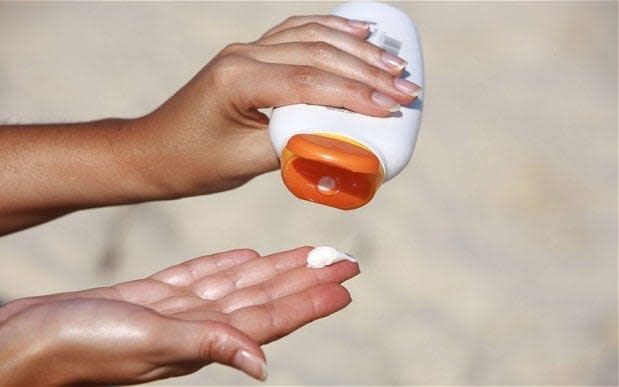Molecule which can ‘dance’ away harmful sunlight could be future of tanning lotion

The end of reapplying sunscreen could be on the horizon after scientists found a molecule which can ‘dance’ away the harmful sunlight.
Plants stay safe from the Sun because they hold a molecule which absorbs ultraviolet light and uses the energy to shake at a speed of 100 billion twists per second, which expends the radiation before it can cause harm.
Scientists at the University of Bath searched for a structure with similar properties and discovered that diethyl sinapate closely mimics the process when exposed to sunlight.
When they added it to moisturiser and tested it on synthetic skin exposed to UV light they found it performed the same dance, which researchers likened to the flicking of a flamenco dancer’s wrist.
They also found that it degraded only three per cent over two hours, compared to sun cream which depletes by 30 per cent, meaning it could last 10 times as long as traditional suntan lotion.
It is also far more environmentally friendly. Many sun creams today contain ingredients which are toxic to wildlife and humans, and can cause the bleaching of corals.

Professor Vasilios Stavros from the University of Warwick, Department of Chemistry, who was part of the research team, explains: “A really good sunscreen absorbs light and converts it to harmless heat.
“A bad sunscreen is one that absorbs light and then, for example, breaks down potentially inducing other chemistry that you don’t want. Diethyl sinapate generates lots of heat, and that’s really crucial.
“Amidst escalating concerns about their impact on human toxicity (e.g. endocrine disruption) and ecotoxicity (e.g. coral bleaching), developing new UV filters is essential.
“We have demonstrated that a highly attractive avenue is ‘nature-inspired’ UV filters, which provide a front-line defence against skin cancer and premature skin aging.”
The researchers now want to test their molecular cream on human skin.
Professor Florent Allais and Dr Louis Mouterde, URD Agro-Biotechnologies Industrielles at AgroParisTech (Pomacle, France), who collaborated with Warwick University on the research, said: “What we have developed together is a molecule based upon a UV photoprotective molecule found in the surface of leaves on a plant and refunctionalised it using greener synthetic procedures.
“Indeed, this molecule has excellent long-term properties while exhibiting low endocrine disruption and valuable antioxidant properties.”
The research was published in the journal Nature Communications.

 Yahoo News
Yahoo News 
